As candidates for the Democratic presidential nomination brace themselves for a second verdict from voters in New Hampshire on February 11, audiences around the world are scratching their heads trying to understand what’s going on. TV shows on U.S. politics are a preferred form of entertainment across the planet, yet this time, reality has surpassed fiction. After three years of a most unusual presidency that has kept both allies and rivals on their toes, the choice of an adversary to Donald Trump feels of epic proportion. But if the Iowa caucuses failed to bring clarity, what will?
As a frequent commentator of U.S. politics for a French audience, I am often on the receiving end of impossible questions: “So, who is the next Obama?”; “Americans make a big fuss about diversity, but have you seen the candidates? Same old white men”; “Bernie Sanders is supposedly too progressive, but in France he would be a centrist, wouldn’t he?”; “A woman can’t get elected president. Remember Hillary Clinton?”; “I like the guy, Pete Buttig… Butti… Bu… how do you pronounce his name again?”; “All of that is well and good, but let me tell you something: in the end, Trump will be reelected.”
I wouldn’t dare try to debunk all, or for that matter any, of this well-intentioned amateur punditry. But it reminds me that it is hard to get to the substance behind the noise of a primary horserace. In an effort to clarify matters for myself, and a few potential readers, I have tried to dissect the forces at play within the 2020 Democratic camp in my upcoming book, Des Démocrates en Amérique: L’heure des choix face à Trump (Fayard-Fondation Jean Jaurès, 2020). Its main takeaway can be diluted to a simple question: what do Democrats stand for? As I toured Iowa and New Hampshire ahead of the caucuses and primaries, I was reminded that the answer to this question is not obvious, but rather hidden behind a large field of contenders and a simplistic progressive-versus-moderate narrative. After a year of research on the topic, this is how I have come to think of it (and explain it to fellow foreigners):
The main driving force in these primaries is the idea that Democrats need, first and foremost, to beat Donald Trump (obviously!). For many, his 2016 election was an aberration. His victory was circumstantial, a result of Clinton’s campaign mistakes coupled with foreign interference, only enabled by the Electoral College. This historical mistake can be repaired, provided Americans sweep the Trump anomaly under the rug. The party’s priority is “electability:” identifying the candidate most likely to win against Donald Trump, someone who can bring together generations across social, ethnic, and racial groups, who can attract “the average voter,” particularly in the few states narrowly lost by Hillary Clinton in 2016.
This is the argument made by former Vice President Joe Biden, a politician with a “regular Joe” persona who promises to “restore the soul of America.” Then, and only then, can things get back to normal. But, if any one lesson can be gleaned from Iowa, it’s that Democrats don’t seem that interested in just returning to normal. Attending a Joe Biden event in Hudson, New Hampshire, this weekend, I was struck by the passivity of the audience, listening respectfully and in silence to a politician they generally like but refuse to commit to. As Iowa eroded his “electability” argument, Biden’s only comeback plan resides in African-American support, which is massive indeed, at least up until now. Yet, as I witnessed folks leaving the room before the end of Biden’s town hall, I couldn’t help but think that there must be something else at play.
It appears that, for a growing part of the Democratic base, 2016 was no accident, but the symptom of a more serious illness: the desperation of working class and lower-middle class Americans who are looking to upset the established order. Indeed, the situation is dire: working wages don’t cover the cumulative costs of healthcare, education, pensions, housing; the risk of personal financial ruin has doubled in 40 years; Americans are dying—life expectancy has been decreasing for the past three years (with the exception of a slight uptick last year).
Leaving the caucus precinct in Waterloo, Iowa, a country club waitress was telling me of her financial difficulties—faced with high costs of rent, food, and healthcare, only able to make ends meet by selling cannabis out of her car. Letting me in on a secret, she told me that her upcoming knee replacement surgery, which she needs to be able to continue working, led her to double her stash and look for new customers.
Stories like these are all too real. Hurt by globalization and international trade competition, struggling American workers flocked to Trump and can only be recaptured by addressing their legitimate grievances. At least that’s the argument of Vermont Senator Bernie Sanders and Massachusetts Senator Elizabeth Warren. They espouse an unapologetic shock therapy; they promise universal public healthcare, early childhood education, free college, and a dramatic increase of the minimum wage, offering to implement robust regulation of markets and taxation of the rich as the means of achieving these goals. As political rallies in Iowa and New Hampshire overflow with supporters, there is no question that their promises dominate the political conversation, although their dual existence threatens each other’s own prospects. But the wounds of 2016 remain raw. The implicit accusation behind their programs—that Democrats have cozied up to Corporate America and forgotten regular Americans—is quite upsetting to the establishment wing of the party, and the two progressive senators don’t have that many friends on the inside. In the age of Trump, Democrats worry deeply about infighting.
Many believe that this brand of fiery leftist populism will exacerbate the main problem at the heart of America today: the hyper-polarization and hyper-partisanship that is ripping the country apart geographically, culturally, and politically. For a new crowd of modern Democrats, a personality as divisive as Donald Trump could only thrive because American democracy itself is in crisis. An outdated constitutional order, fragmented politics, and a divisive media ecosystem have produced a broken system where institutions are not representative, and people feel alienated.
There is a crisis of belonging in America, says former South Bend mayor Pete Buttigieg, who promises to reconcile the country. To him, American values and symbols—religion, the Constitution, the armed forces—should unite Americans rather than divide them. He wants to move past the left-right divide and re-center the political conversation—very Obama-esque of him, say many, but also very Macron-esque, as the French president made the rejection of the class left-right divide a signature of his politics. Blurring political lines allows for blurring of camps and diversifying support. At a Buttigieg rally in Nashua, New Hampshire, this weekend, I met an older voter who had driven down from Maine to canvass for Pete, enthused by his fresh energy and his message of hope and optimism. I also encountered a former Tony Blair adviser with a Northern Ireland Labour politician, both intrigued, like many Europeans, by this American version of the Third Way, hoping it could lead to a larger renewal of progressive politics. Minnesota Senator Amy Klobuchar also plays on the strength of the Midwestern brand of no-nonsense and unity. But the most progressive politicians go a step further: they call for modernizing institutions and amending the Constitution to prevent partisan games from artificially dividing Americans. Buttigieg, and others, have put forward ambitious ideas for getting rid of the Electoral College, controlling gerrymandering, or reforming the Supreme Court. Americans, tired of D.C. hysteria, want to believe in unity and renewal, and who best than a 30-something gay mayor from Mike Pence’s home state of Indiana to personify belonging? Well, that is if he wins.
Because one of the wild cards in this primary race in my opinion resides in a fourth corner of the electorate, where most of the energy within the Democratic base stems, but that has no obvious embodiment among the candidates. It is the rise of a generation of young activists, diverse and progressive, who are fundamentally questioning the order of things in American society, where gender, ethnic, racial, sexual and religious minorities are structurally underrepresented. Yet, the Democratic Party absolutely needs them in November, at least as much as it needs the independents and the moderates. They marched in the streets in 2017, they knocked off establishment politicians on both sides of the aisle in 2018, they agitated the House in 2019. But this post-Trump generation of activists won’t just fall in line. They push for gun-control legislation, they demand climate action, they push for new progressive ideas such as reparations for Black America or de-criminalizing the border. None of the current hopefuls are their ideal candidate, although Bernie comes close to it. Rewarded for his relentless advocacy for the poor and disenfranchised, Bernie got the endorsement of three members of the Squad and the Sunrise Movement. Warren follows suit, endorsed by the Working Families party and former candidate and progressive hero Julián Castro. Centrist politicians, including self-funding former New York city mayor Mike Bloomberg, who joins the primary ballot on Super Tuesday, brush aside their theory of the case as marginal and alienating. But the young and diverse crowd of precinct captains and canvass organizers I met in Iowa and New Hampshire reminds me that the fire in many Democrats’ bellies comes from this hope of the rise a new American majority, collective, intersectional, and radically inclusive.
No single one of these undercurrents corresponds to a single candidate, just as no candidate embodies a single undercurrent. Yet each is a powerful force within the Democratic Party that responds to deep-seated concerns about America’s evolution. Many worry deeply about increasing socioeconomic inequalities and want to rein in the capitalist system. Many are shocked by the enduring legacy of structural racism and underrepresentation and want it to be addressed head on. Many still anguish over deepening divisions and want to reconcile Americans. Some simply hope to return to a more normal America. But every single Democrat is concerned with Donald Trump’s abuse of power and determined to take back the White House. In fact, most Democrats worry about all of those things, and yet no candidate has so far been able to capture them all. Which brings us to the present day: the beginning of a primary process which could take months (or end within weeks), while personalities fight it out. Yet to achieve the perfect union that will lead to a new American majority, the next Democratic candidate will have to accept that his or her coalition will only stand if it is deeply rooted in the four corners of the Democratic camp.
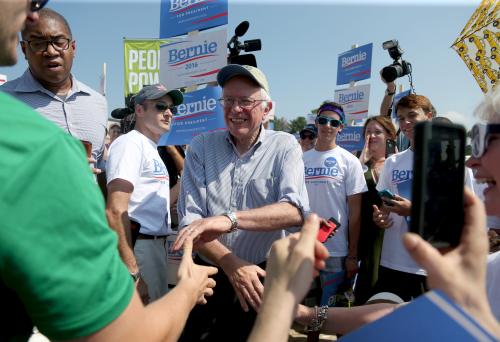
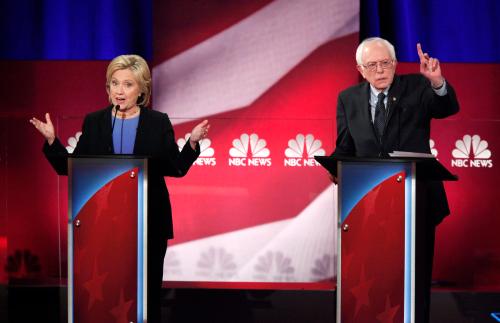
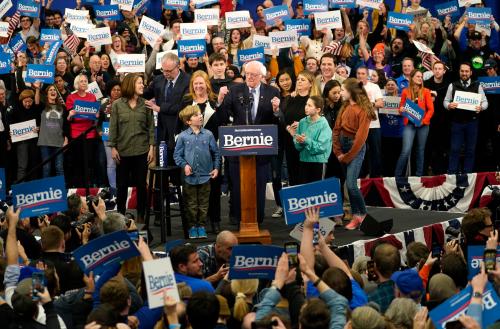
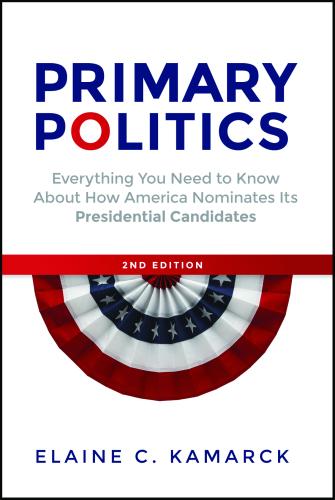

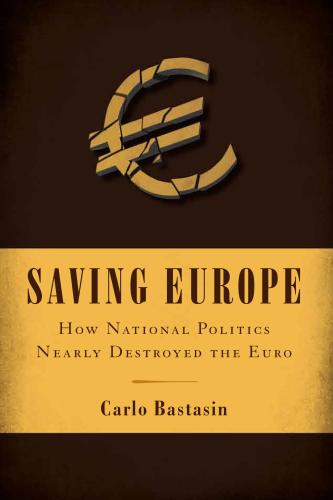
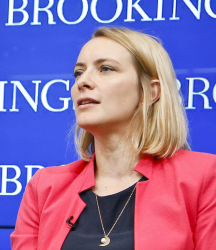

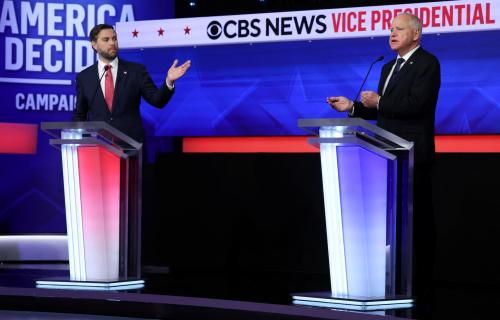

Commentary
Democracy in America 2020: A French perspective on the battle for the Democratic nomination
February 11, 2020